After ten years of restoration, visionary Jamsetji Tata’s one-time residence, Esplanade House, stands like a splendid reminder of its legacy. Marvel at frames from an exclusive photo walk with its conservation architect Vikas Dilawari
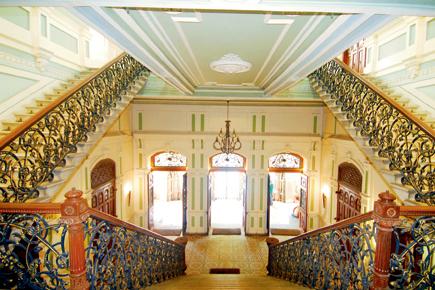
Esplanade House
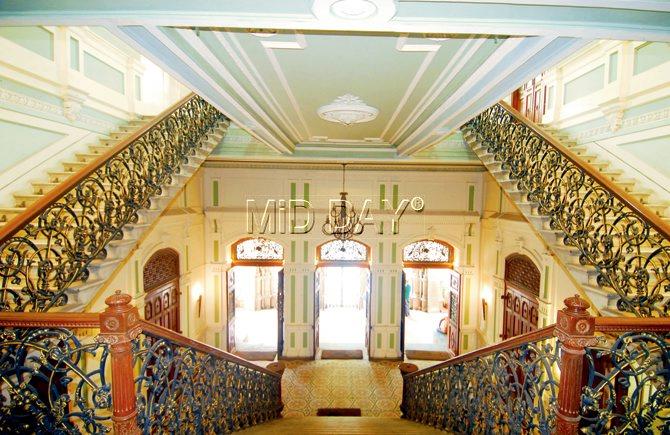
The cast iron and wood railing staircase is the centrepiece that connects the ground and first floors of the Esplanade House. Pics/Sameer Markande
ADVERTISEMENT

Bay windows and curvilinear lead sheet chajjas make for an impressive blend of Indian and Western influences at the Esplanade House. It consists of two buildings, the main block facing the Esplanade ‘maidan’ and the annex on the rear side. The construction began in 1885, and was completed in 1887. It was based on designs by Jamsetji Tata and Mr Morris (of Gostling and Morris, a local firm).
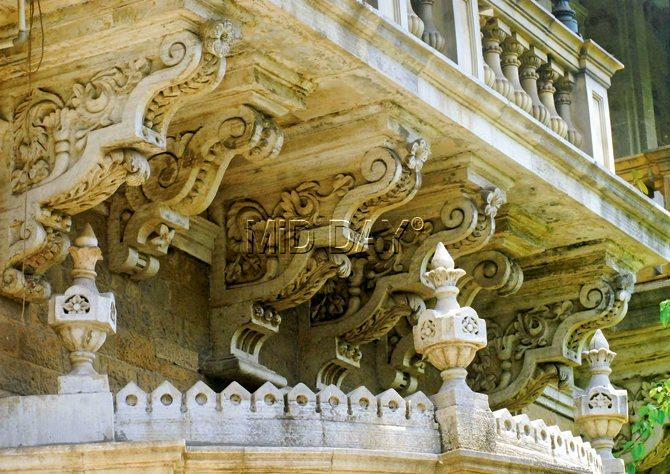
Intricate stone carvings

The cast iron railing and teakwood grand staircase is the centrepiece of this residence. Seen in the frame is Fali P Sarkari, trustee, RD Sethna Scholarship Fund. The finest cast iron work can be seen at its main gate, staircase, indoor tympanums and the inter-connecting bridges.
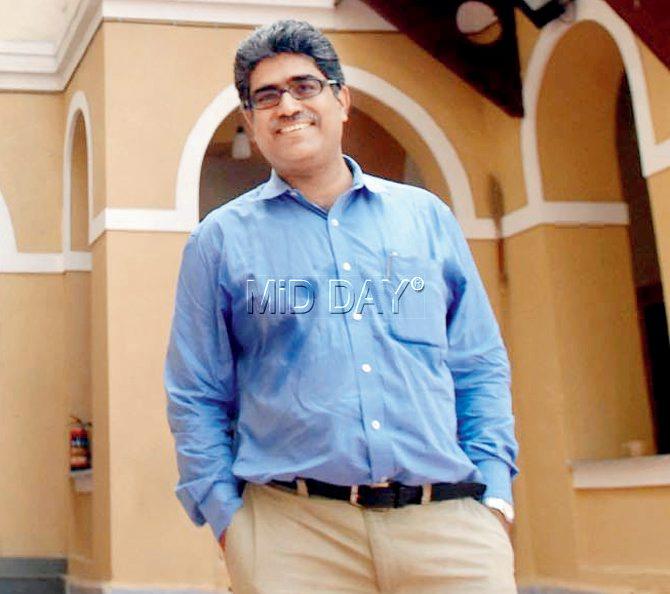 Conservation architect Vikas Dilawari ensured that the vintage charm and aura of the structure was retained during its 10-year-long restoration
Conservation architect Vikas Dilawari ensured that the vintage charm and aura of the structure was retained during its 10-year-long restoration
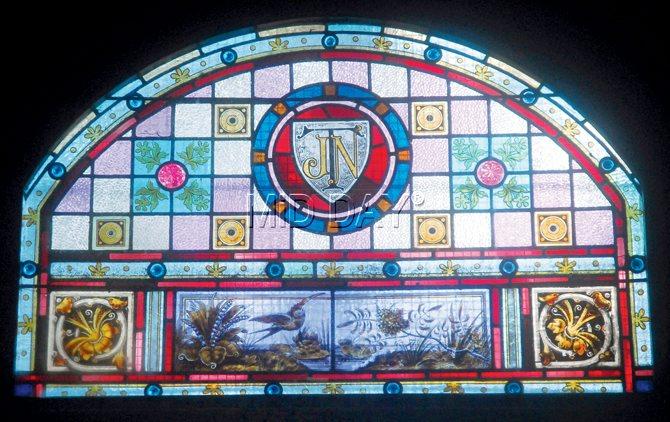 Founder of the Tata empire, Jamsetji Nusserwanji Tata’s initials in stained glass inside an ad agency whose office is on the ground floor;
Founder of the Tata empire, Jamsetji Nusserwanji Tata’s initials in stained glass inside an ad agency whose office is on the ground floor;
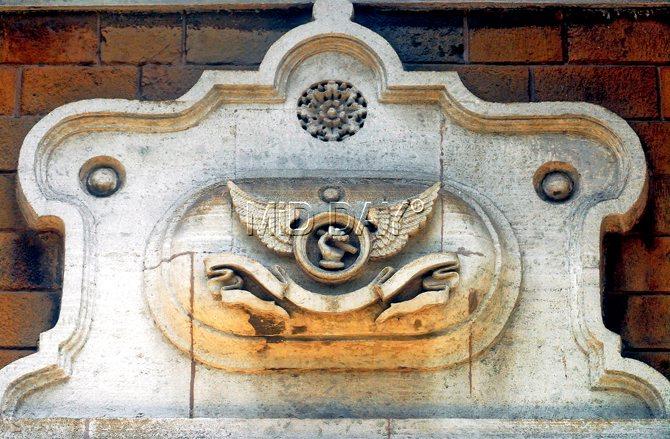 The Coat of Arms of the Tata family on the façade
The Coat of Arms of the Tata family on the façade
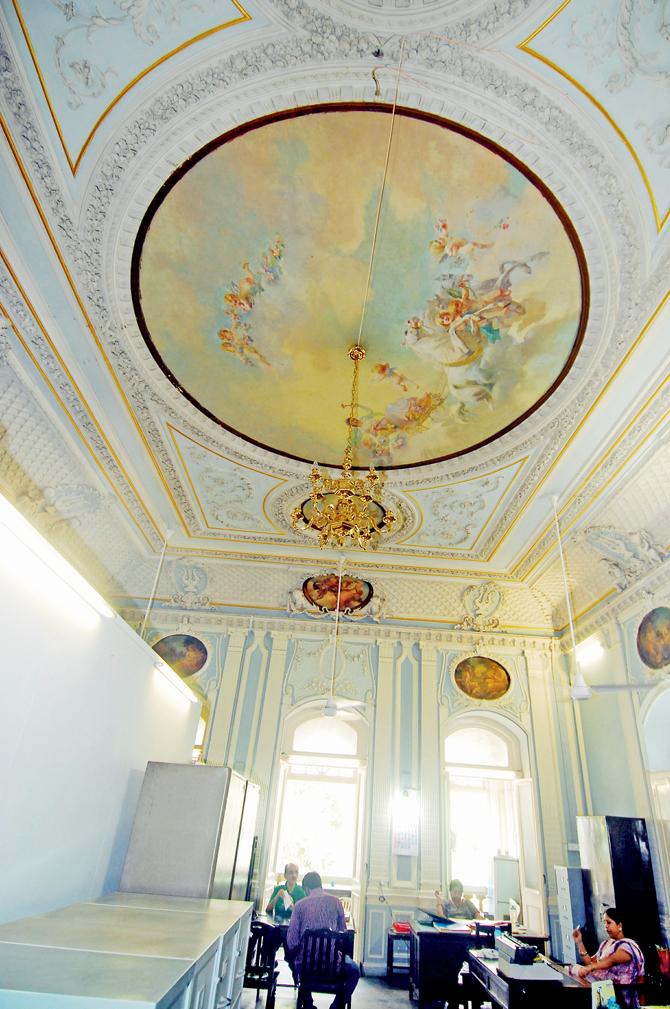 The Louis VVI Drawing Room now serves as the office of the RD Sethna Scholarship Fund. The building boasts of oil paintings on the ceiling, gold gilding on cast iron works, and ivory inlay work.
The Louis VVI Drawing Room now serves as the office of the RD Sethna Scholarship Fund. The building boasts of oil paintings on the ceiling, gold gilding on cast iron works, and ivory inlay work.
 An unique feature at the site is the annex that was built for the domestic help. Located in the rear side of the complex, these are connected to the main building via interconnected inclined bridges, and are still in use.
An unique feature at the site is the annex that was built for the domestic help. Located in the rear side of the complex, these are connected to the main building via interconnected inclined bridges, and are still in use.
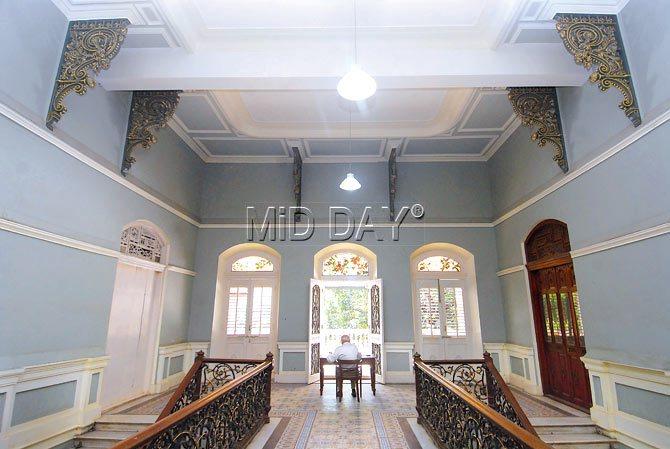
At the Esplanade House, ornate decorative teakwood screens serve as ventilators. This view is from the landing of the first floor that looks out into the vast balcony.
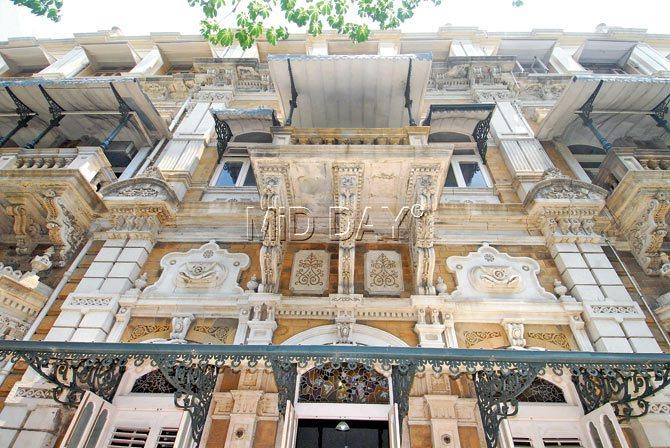
The outer facade is a stunning mix of classical architecture as well as chajjas inspired from traditional Indian homes.
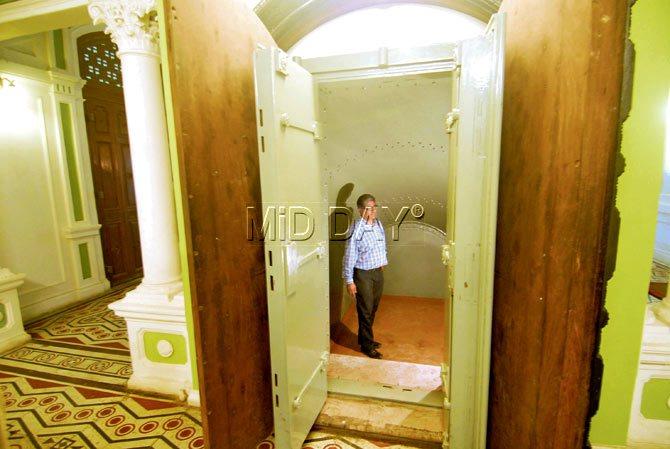
Conservation architect Vikas Dilawari shows us the bunker that was built for the residents of Esplanade House, located on the ground floor
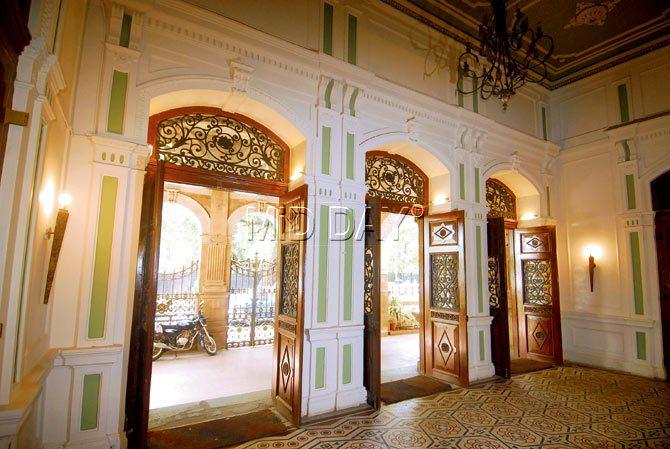
The main entrance. Three Burma teakwood doors and Roman mosaic floor tiles greet the visitor
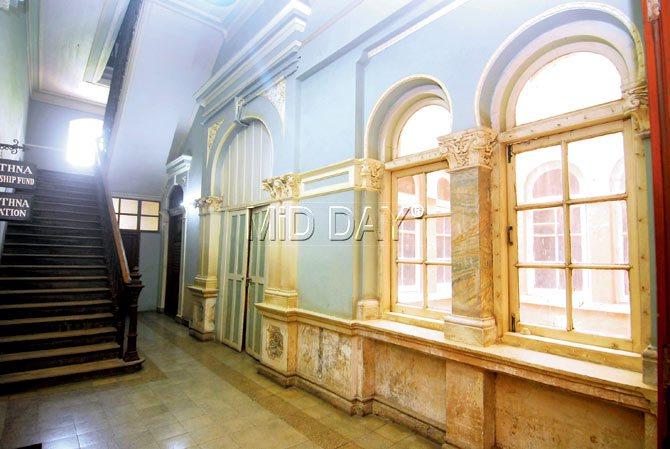
Note the stucco work along the lower end of the windows. Similar to marble, it has a smooth finish as well
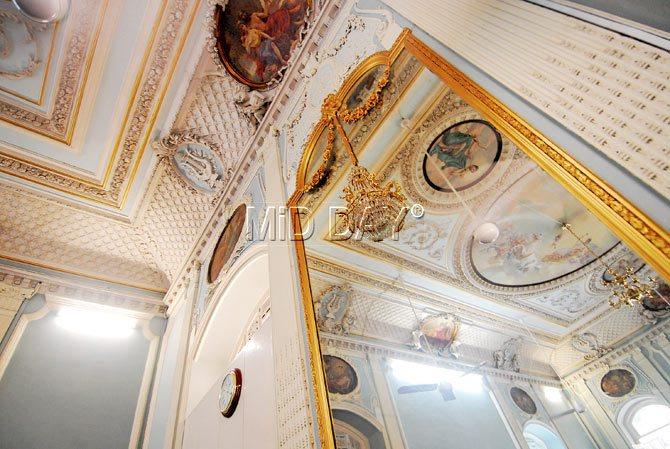
The stunning mirror that reflects into the Louis XVI Drawing Room
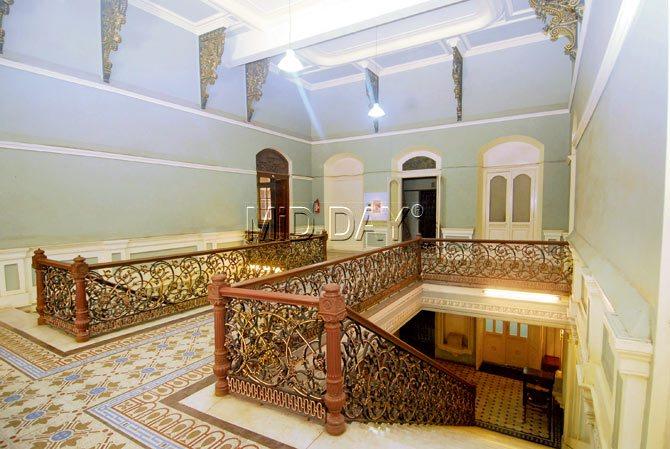
The landing of the first floor
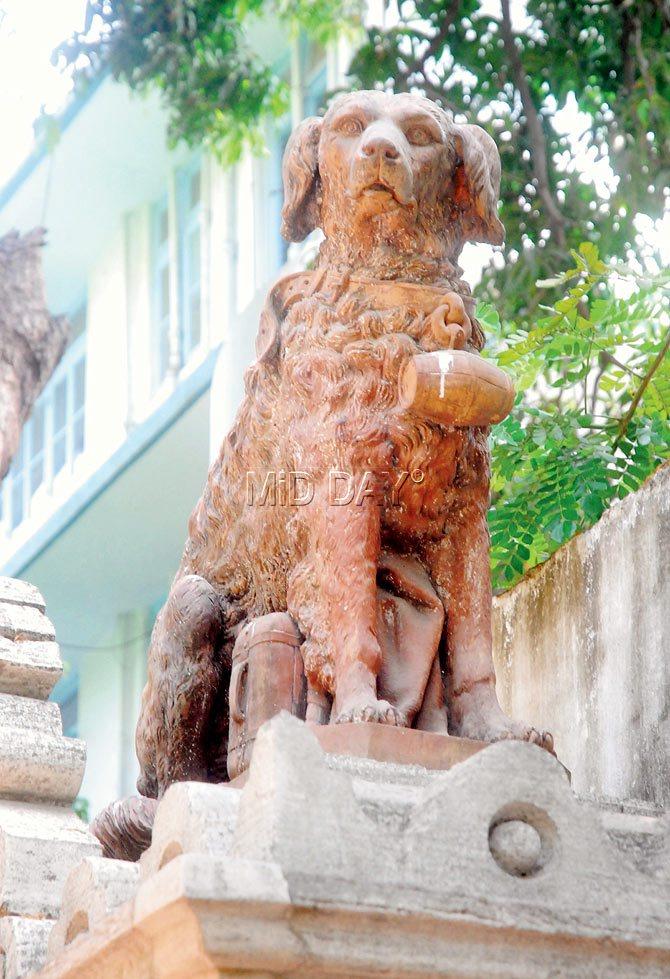
The family pet dog of Jamsetji Tata, called Saint Bernard
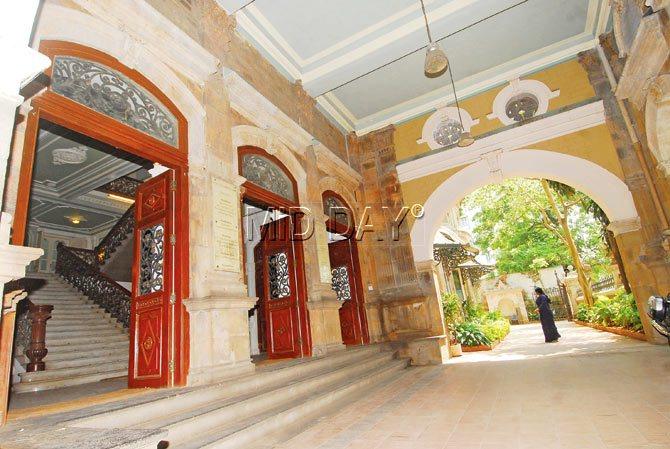
Another view of the entrance

The stunning stone work dots the outer facade
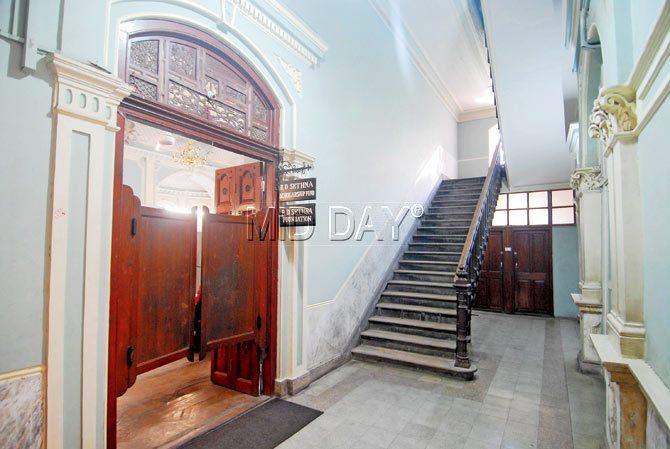
Outside the office of the RD Sethna Scholarship Fund (formerly known as Louis XVI Drawing Room), first floor
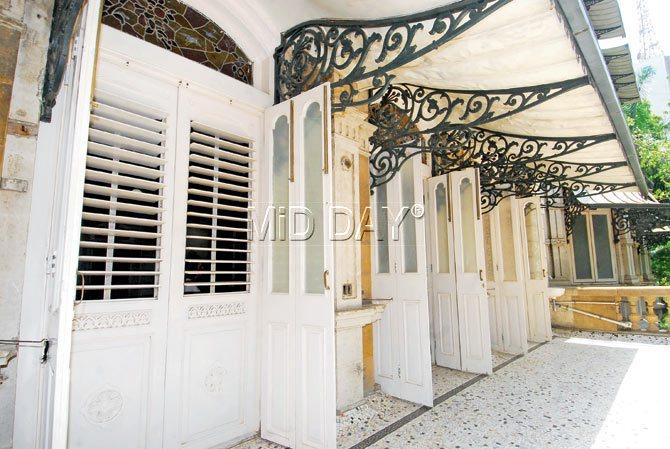
The restored section on the balcony on the first floor offers a great view of the tree-laden road and used to face the earlier undivided Esplanade maidan.
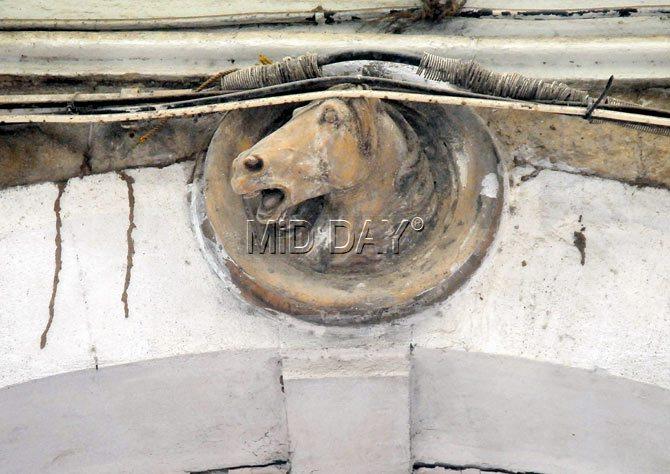
The horse insignia marks a memory of the stable houses that once were a part of the Esplanade House
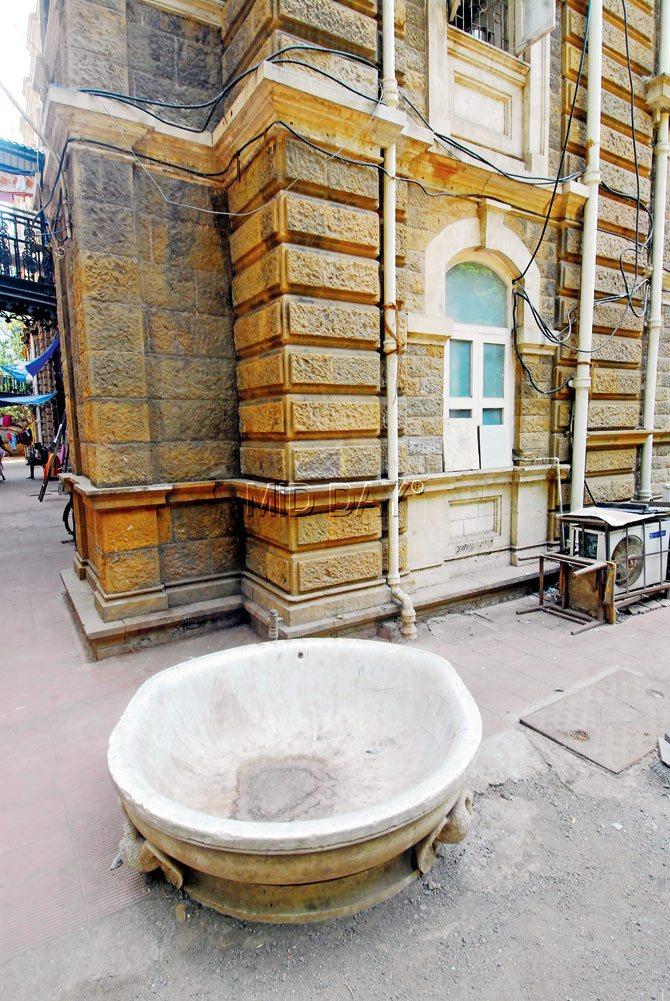
A large marble water bowl meant for horses stands a reminder of another time.
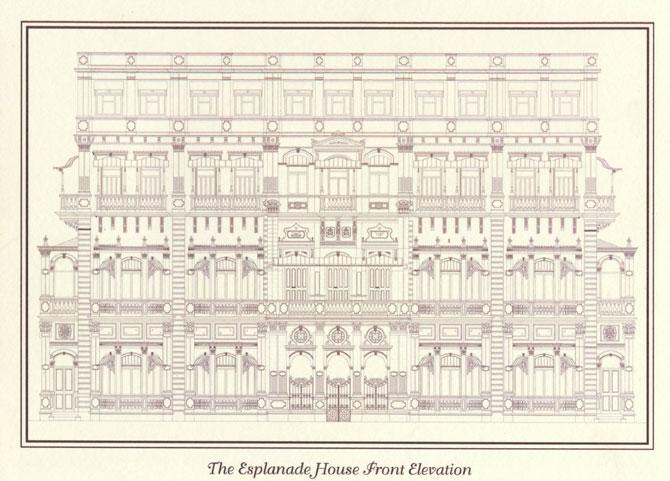
Drawing courtesy Vikas Dilawari
 Subscribe today by clicking the link and stay updated with the latest news!" Click here!
Subscribe today by clicking the link and stay updated with the latest news!" Click here!






